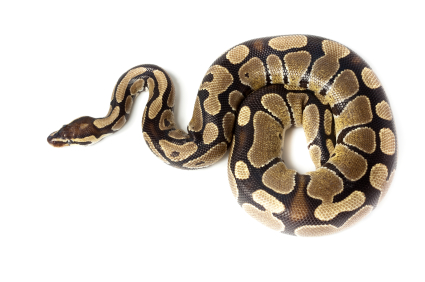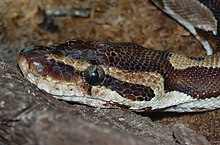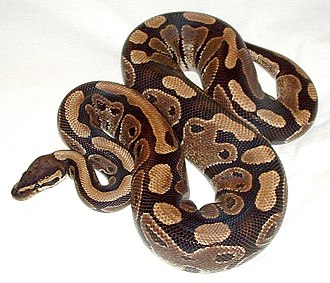Uncategorized
Ball Python For Sale
Buy a ball python from us
The hottest thing in the reptile world right now are Ball Python morphs. We breed many of the ball pythons for sale here. Snakes at Sunset is at the leading edge of new and exciting ball python morphs. The ball pythons for sale are guaranteed eating , and sexed correctly. There are thousands of combinations of ball python morphs for sale.
Ball Pythons are very common in Ghana, Togo and Benin West Africa. Over the years, they collect gravid females and get the eggs and incubate them in captivity from all over the region and they then let the mothers go. Since so many were collected, and so many hatched, dozens of different morphs were randomly hatched! That is the basis for all the captive bred, born in USA ones we now have.
All Ball Pythons for sale are offered as captive bred. Its amazing how many choices you have, there is literally something for everyone.
We notice that most people feed ball pythons incorrectly. Ball Pythons DO NOT EAT PINKIES! They eat a mouse or rat that is as thick as the thickest part of their body. Also Ball Pythons love to hide, and explore at night, so a red bulb for warmth is best, sometimes paired with a Zoomed Snake Heat Pad. . Atleast a warm side of 90-95f and a cool side of 80-84f. We recommend two hide spots for ball pythons.
There are two categories, baby/juveniles, and larger then 500gram weight snakes for sale.
They are one of our specialties here at Snakes at Sunset.
When you buy a ball python from us, they all come with live arrival guarantee and overnight shipping.
Why Buy a Ball python from us:
Not only will you get high quality python, but you can always come back and ask us for tips or questions. We want you to enjoy your ball python and give it the best possible care. We breed a large portion of the snakes we offer for sale, as well as purchase from local breeders where we can inspect them, and know who and how they are taken care of to ensure a perfect addition to your collection.
When you buy a ball python from us, be assured your getting a top notch, healthy animal with all our guarantees
Ball Python for Sale

I would love to write a review on my baby ball python, I just received him, and he is so beautiful, and tame as can be, he even kissed me on the face with his little tongue! Unbelievable, I’ve never seen one so well tempered, even out of the box! Imagined him to be grumpy after all the bumping around in the mail! I would love to give him a few days to get acclimated to his new enclosure and write a thorough review on my new baby BP. Thanks a million guys!
Corey Peterson
I just received my second beautiful ball python. I don’t think one could find healthier looking snakes if they tried. Not only does backwater breed top of the line beautiful and healthy looking snakes but they do great business. I am new to the snake world and even after I bought my first snake Backwater was still just as quick to answer all my questions along the way. This is without question an honest business that cares about satisfying their containers. Definitely the way to go if one wants the best of the best. I will be back that is for sure. Thank you backwater.
Kevin Kolberg
Ball Python
Python regius
We have some captive-bred Ball Pythons for sale at incredibly low prices. This is one of the most popular pet snakes in the world, mainly due to their docile nature and beautiful markings. This species is also known as the Royal python, and originates from Central Africa.
Their name comes from the fact that as a defense mechanism, they can roll themselves up into a tight ball.
Don’t forget to purchase some frozen feeder mice for your new snake!
S



Sexing Your Ball Python
Please feel free to request a male or female snake (or any combination thereof) when you order, but please be aware that we cannot guarantee the sex. However, we can guarantee that someone very experienced with reptiles will attempt to select the specific snake(s) you are requesting.
Shipping Your Ball Python
We charge a flat $44.99 for overnight delivery to your doorstep, regardless of the number of reptiles, amphibians, or inverts you buy. Please read our shipping information page before ordering. Sorry, we do not ship internationally (U.S. only). Our delivery schedule can be found below:

When you buy a Ball Python from us, you receive our 100% ironclad live arrival guarantee. Please read the details of our guarantee before ordering.
Because we responsibly offer reptiles for sale online (as well as amphibians, tarantulas, and scorpions), we reserve the right to delay your order upon the fairly rare occurrence of unacceptable weather conditions. This is strictly for the safety of the animal(s), and you will be notified by e-mail if this does occur.
Payment
We accept VISA, Mastercard, American Express, Discover, and Paypal. We do not accept checks, money orders, or cashier’s checks.
Ball Python For Sale
The ball python (Python regius), also called the royal python, is a python species native to West and Central Africa, where it lives in grasslands, shrublands and open forests. This nonvenomous constrictor is the smallest of the African pythons, growing to a maximum length of 182 cm (72 in).[2] The name “ball python” refers to its tendency to curl into a ball when stressed or frightened.[3]
Taxonomy
Boa regia was the scientific name proposed by George Shaw in 1802 for a pale variegated python from an indistinct place in Africa.[4] The generic name Python was proposed by François Marie Daudin in 1803 for non-venomous flecked snakes.[5] Between 1830 and 1849, several generic names were proposed for the same zoological specimen described by Shaw, including Enygrus by Johann Georg Wagler, Cenchris and Hertulia by John Edward Gray. Gray also described four specimens that were collected in Gambia and were preserved in spirits and fluid.[6]
Description

The ball python is black, or albino and dark brown with light brown blotches on the back and sides. Its white or cream belly is scattered with black markings. It is a stocky snake with a relatively small head and smooth scales.[3] It reaches a maximum adult length of 182 cm (6 ft 0 in). Males typically measure eight to ten subcaudal scales, and females typically measure two to four subcaudal scales.[7] Females reach an average snout-to-vent length of 116.2 cm (45+3⁄4 in), a 44.3 mm (1+3⁄4 in) long jaw, an 8.7 cm (3+7⁄16 in) long tail and a maximum weight of 1.635 kg (3 lb 9.7 oz). Males are smaller with an average snout-to-vent length of 111.3 cm (43+13⁄16 in), a 43.6 mm (1+23⁄32 in) long jaw, an 8.6 cm (3+3⁄8 in) long tail and a maximum weight of 1.561 kg (3 lb 7.1 oz).[8] Both sexes have pelvic spurs on both sides of the vent. During copulation, males use these spurs for gripping females.[9] Males tend to have larger spurs, and sex is best determined by manual eversion of the male hemipenes or inserting a probe into the cloaca to check the presence of an inverted hemipenis.[10]
Distribution and habitat
The ball python is native to west Sub Saharan Africa from Senegal, Mali, Guinea-Bissau, Guinea, Sierra Leone, Liberia, Ivory Coast, Ghana, Benin, and Nigeria through Cameroon, Chad, and the Central African Republic to Sudan and Uganda.[1] It prefers grasslands, savannas, and sparsely wooded areas.[3]
Behavior and ecology
Ball pythons are typically nocturnal or crepuscular, meaning that they are active during dusk, dawn, and/or nighttime.[11] This species is known for its defense strategy that involves coiling into a tight ball when threatened, with its head and neck tucked away in the middle. This defense behavior is typically employed in lieu of biting, which makes this species easy for humans to handle and has contributed to their popularity as a pet.[3]
In the wild, ball pythons favor mammal burrows and other underground hiding places, where they also aestivate. Males tend to display more semi-arboreal behaviors, whilst females tend towards terrestrial behaviors.[11]
Diet
The diet of the ball python in the wild consists mostly of small mammals and birds. Young ball pythons of less than 70 cm (28 in) prey foremost on small birds. Ball pythons longer than 100 cm (39 in) prey foremost on small mammals. Males prey more frequently on birds, and females more frequently on mammals.[11] Rodents make up a large percentage of the diet; Gambian pouched rats, black rats, rufous-nosed rats, shaggy rats, and striped grass mice are among the species consumed.[12]
Reproduction

Females are oviparous and lay three to 11 rather large, leathery eggs.[7] The eggs hatch after 55 to 60 days. Young male pythons reach sexual maturity at 11–18 months, and females at 20–36 months. Age is only one factor in determining sexual maturity and the ability to breed; weight is the second factor. Males breed at 600 g (21 oz) or more, but in captivity are often not bred until they are 800 g (28 oz), although in captivity, some males have been known to begin breeding at 300–400 g (11–14 oz). Females breed in the wild at weights as low as 800 g (28 oz) though 1,200 g (42 oz) or more in weight is most common; in captivity, breeders generally wait until they are no less than 1,500 g (53 oz). Parental care of the eggs ends once they hatch, and the female leaves the offspring to fend for themselves.[10]
Threats
The ball python is listed as Near Threatened on the IUCN Red List; it experiences a high level of exploitation and the population is believed to be in decline in most of West Africa.[1] The ball python is primarily threatened by poaching for the international exotic pet trade. It is also hunted for its skin, meat and use in traditional medicine. Other threats include habitat loss as a result of intensified agriculture and pesticide use.[1] Rural hunters in Togo collect gravid females and egg clutches, which they sell to snake ranches. In 2019 alone, 58 interviewed hunters had collected 3,000 live ball pythons and 5,000 eggs.[13]
In captivity


Ball pythons are the most popular pet snake and the second most popular pet reptile after the bearded dragon.[14] According to the IUCN Red List, while captive bred animals are widely available in the pet trade, capture of wild specimens for sale continues to cause significant damage to wild populations.[1] Wild-caught specimens have greater difficulty adapting to a captive environment, which can result in refusal to feed, and they generally carry internal or external parasites.[citation needed] This species can do quite well in captivity, regularly living for 15-30 years with good care.[15] The oldest recorded ball python in captivity is 62 years, 59 of those at the Saint Louis Zoo.[16]
Breeding
Captive ball pythons are often bred for specific patterns that do not occur in the wild, called “morphs.”[17] Breeders are continuously creating new designer morphs, and over 7,500 different morphs currently exist.[18][19] Most morphs are considered solely cosmetic with no harm or benefit to the individual animal. However, the “spider” morph gene has been linked to neurological disease, specifically related to the snake’s sense of balance.[20] Due to the ethical concerns associated with intentionally breeding a color pattern linked to genetic disease, the International Herpetological Society banned the sale of spider morphs at their events beginning in 2018.[21]
In culture
The ball python is particularly revered by the Igbo people in southeastern Nigeria, who consider it symbolic of the earth, being an animal that travels so close to the ground. Even Christian Igbos treat ball pythons with great care whenever they come across one in a village or on someone’s property; they either let them roam or pick them up gently and return them to a forest or field away from houses. If one is accidentally killed, many communities on Igbo land still build a coffin for the snake’s remains and give it a short funeral.[22][obsolete source] In northwestern Ghana, there is a taboo towards pythons as people consider them a savior and cannot hurt or eat them. According to folklore a python once helped them flee from their enemies by transforming into a log to allow them to cross a river.[23]

